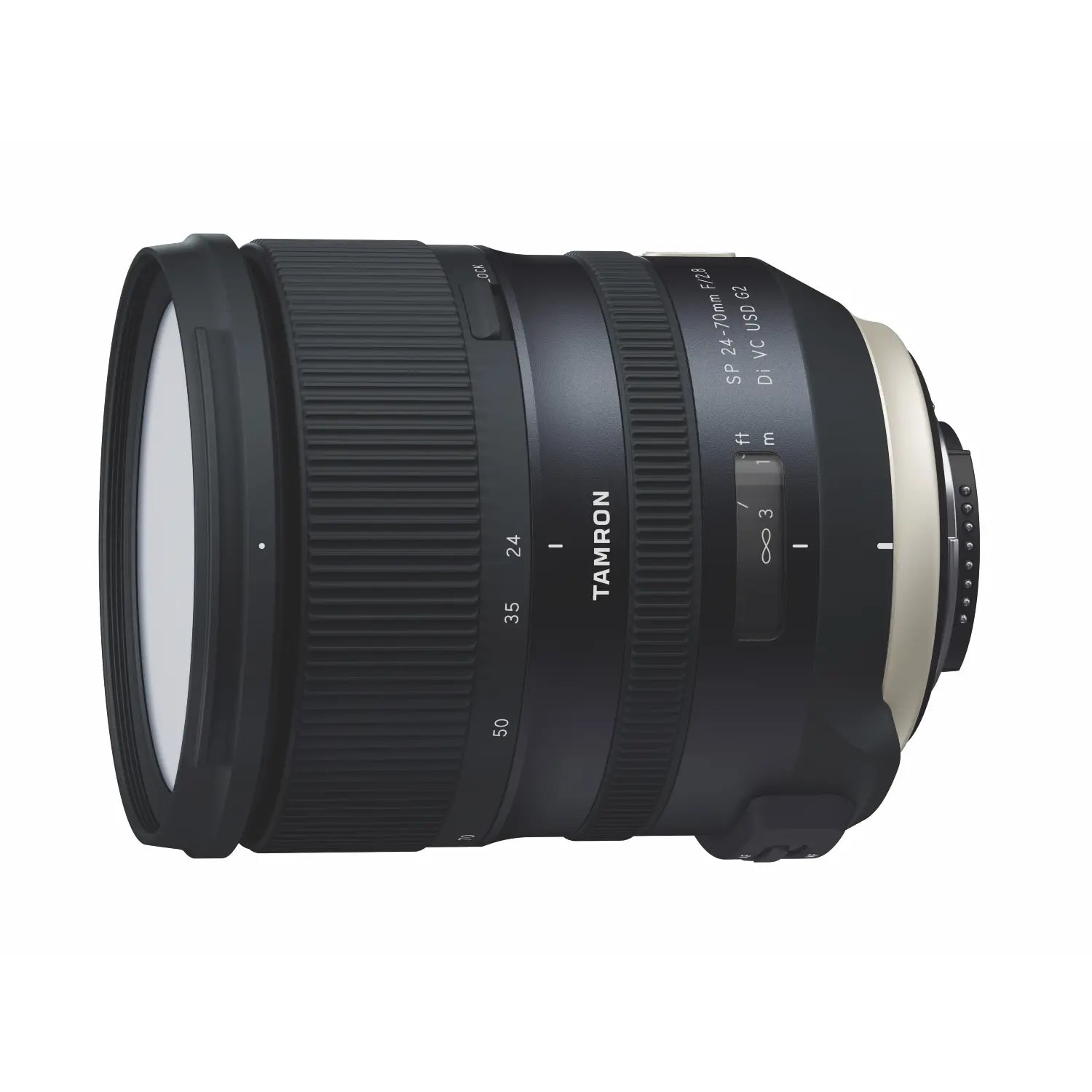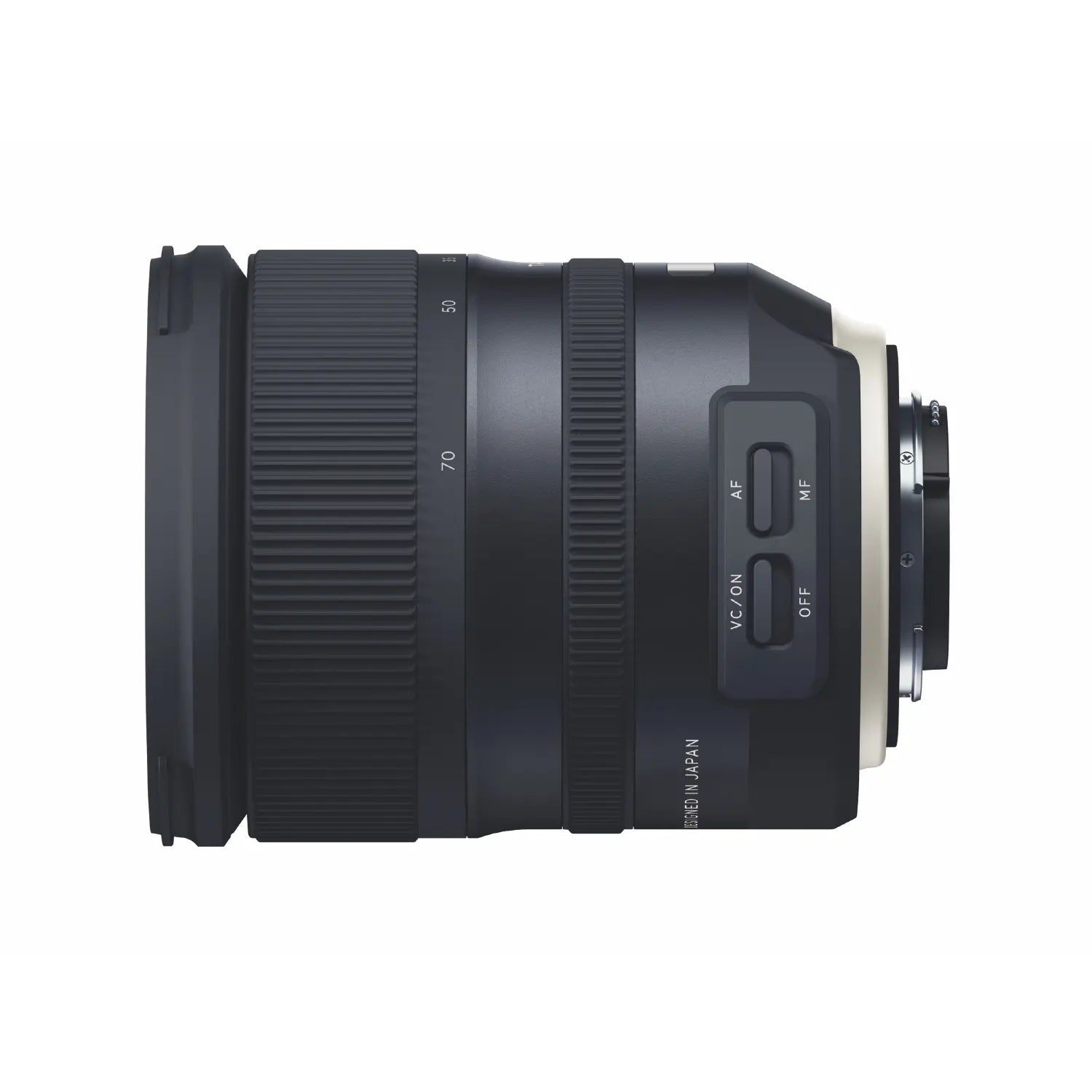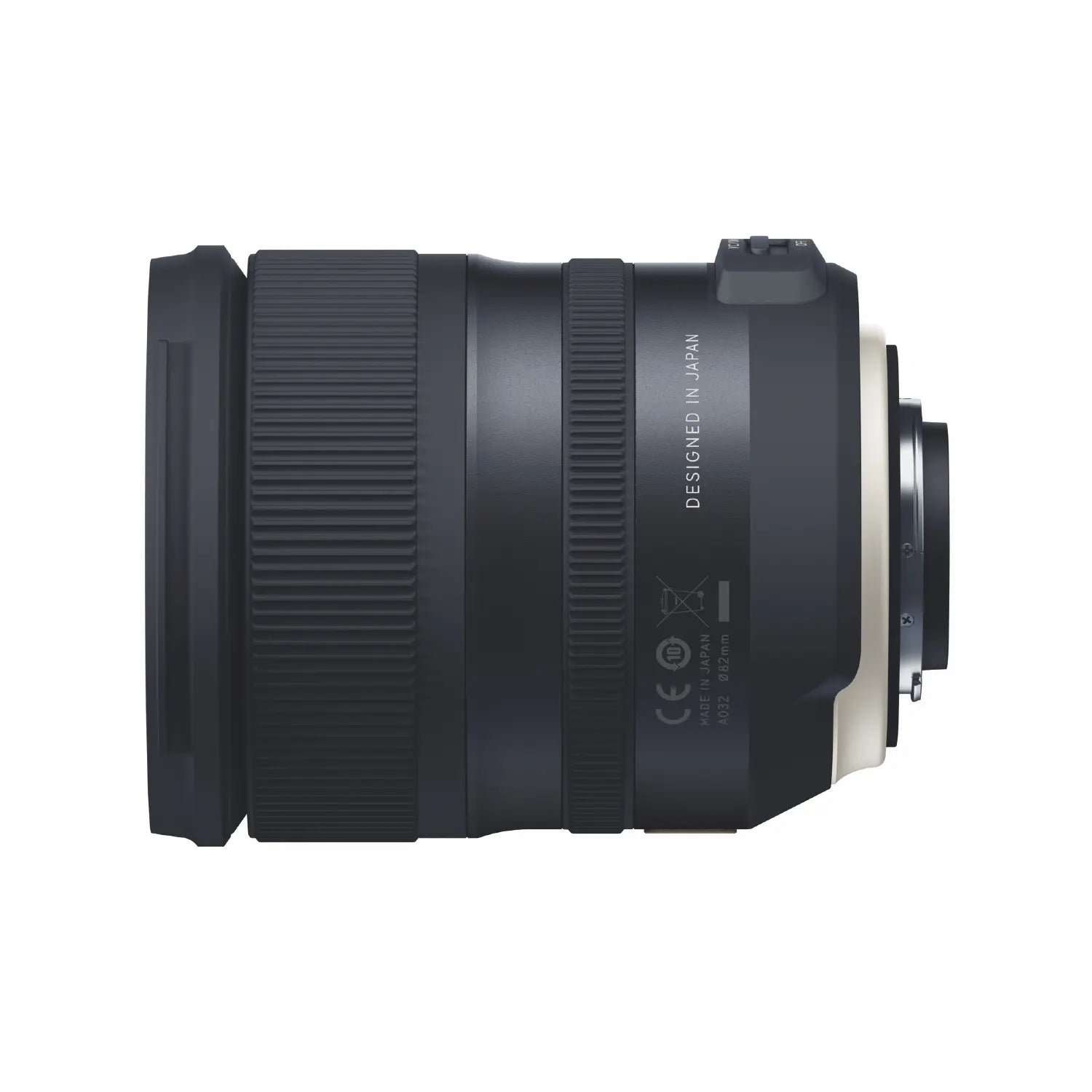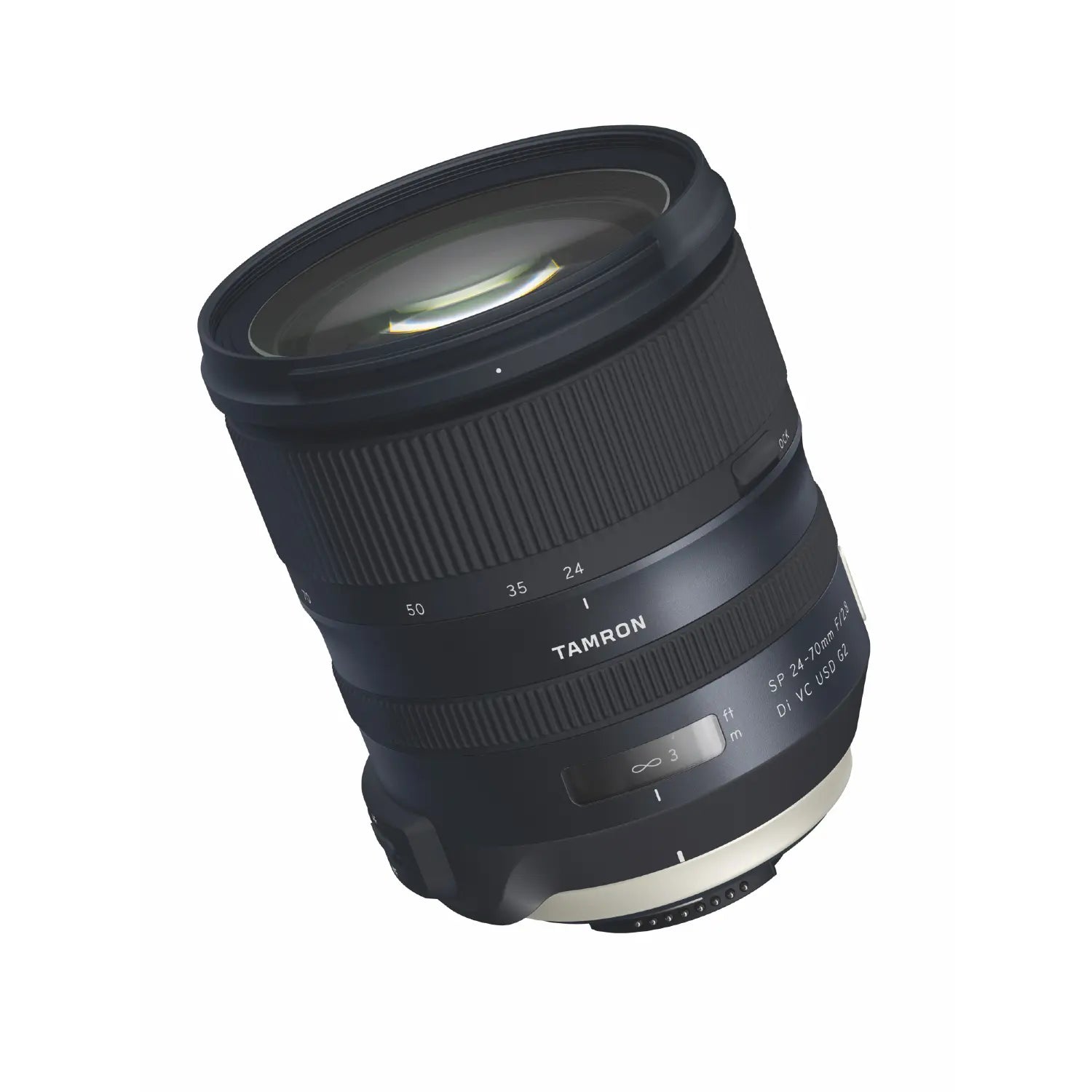Product Description
Tamron 24-70mm f/2.8 Di VC USD G2 Lens – Nikon F Mount
The Tamron 24-70mm f/2.8 Di VC USD G2 lens offers professional-grade performance for Nikon cameras, delivering unmatched versatility, precision, and image quality. Designed to excel in a variety of shooting environments, from landscapes to portraits, this lens provides superior sharpness, vibrant colour reproduction, and reliable handling.

Key Features:
- Fast f/2.8 Aperture: Perfect for low-light photography, stunning background separation, and consistent exposure across the zoom range.
- Dual MPU (Micro-Processing Unit): Enhanced autofocus accuracy and the best-in-class vibration compensation for blur-free images and videos.
- VC (Vibration Compensation) Technology: Features a dedicated processor for outstanding 5-stop stabilisation, ideal for handheld shooting in low light.
- Advanced Optical Design: Includes 17 elements in 12 groups with specialised glass materials like LD (Low Dispersion) and XR (Extra Refractive Index) elements to minimise distortion and chromatic aberrations.
- eBAND Coating: Reduces flare and ghosting for exceptional clarity and contrast, even in challenging backlit situations.
- Fluorine Coating: The front element is water- and oil-repellent, making it easy to clean and resistant to environmental wear.
- Moisture-Resistant Construction: Weather-sealed to protect against moisture and dust, ensuring reliable performance in various conditions.
- Internal Focusing (IF) System: Maintains lens length during focusing, allowing for easier handling and use of filters.
- Zoom Lock Mechanism: Prevents unwanted zoom creep during transport or extended use.
- Electromagnetic Diaphragm: Provides precise and consistent aperture control, a feature now available for Nikon-mount lenses.
- Lens Hood with Locking Mechanism: Prevents misalignment, ensuring consistent performance and avoiding vignetting.

Superior Image Quality:
The Tamron 24-70mm G2 lens is crafted for today’s high-resolution cameras. Its sophisticated optical construction minimises chromatic aberrations, distortion, and spherical aberrations while delivering stunning sharpness and clarity. With a fast f/2.8 aperture, this lens excels in creating beautifully defocused backgrounds and is a perfect tool for professional portraiture, event photography, and video production.

Exceptional Build Quality:
This lens is engineered for durability and ease of use. Its robust yet lightweight design makes it perfect for photographers on the move. The Fluorine Coating and Moisture-Resistant Construction ensure the lens performs flawlessly in challenging environments, from dusty landscapes to rainy outdoor shoots.

Technical Specifications:
- Focal Length: 24-70mm
- Maximum Aperture: f/2.8
- Minimum Aperture: f/22
- Lens Construction: 17 elements in 12 groups
- Filter Size: 82mm
- Minimum Focusing Distance: 0.38m (15 inches)
- Image Stabilisation: Vibration Compensation (VC)
- Aperture Blades: 9 (rounded for beautiful bokeh)
- Mount Compatibility: Nikon F

Applications:
- Portrait Photography: The f/2.8 aperture and rounded 9-blade diaphragm create creamy, soft bokeh that isolates subjects beautifully.
- Landscape Photography: With minimal chromatic aberration and distortion, this lens captures sharp and detailed landscapes.
- Low-Light Performance: The large aperture and advanced VC make it ideal for shooting indoors or in dim environments.
- Travel Photography: Its wide zoom range and robust build make it a versatile companion for all travel adventures.

Why Choose the Tamron 24-70mm f/2.8 G2?
The Tamron 24-70mm f/2.8 Di VC USD G2 Lens offers unparalleled versatility and exceptional performance for professional and advanced photographers alike. Its fast aperture, cutting-edge stabilisation, and sophisticated optical design ensure stunning results across various photography genres.
Invest in a lens that delivers superior performance, reliability, and creativity with the Tamron 24-70mm f/2.8 G2 – Nikon Fit. Perfect for capturing every moment with stunning clarity and precision!
Payment & Security
Your payment information is processed securely. We do not store credit card details nor have access to your credit card information.























